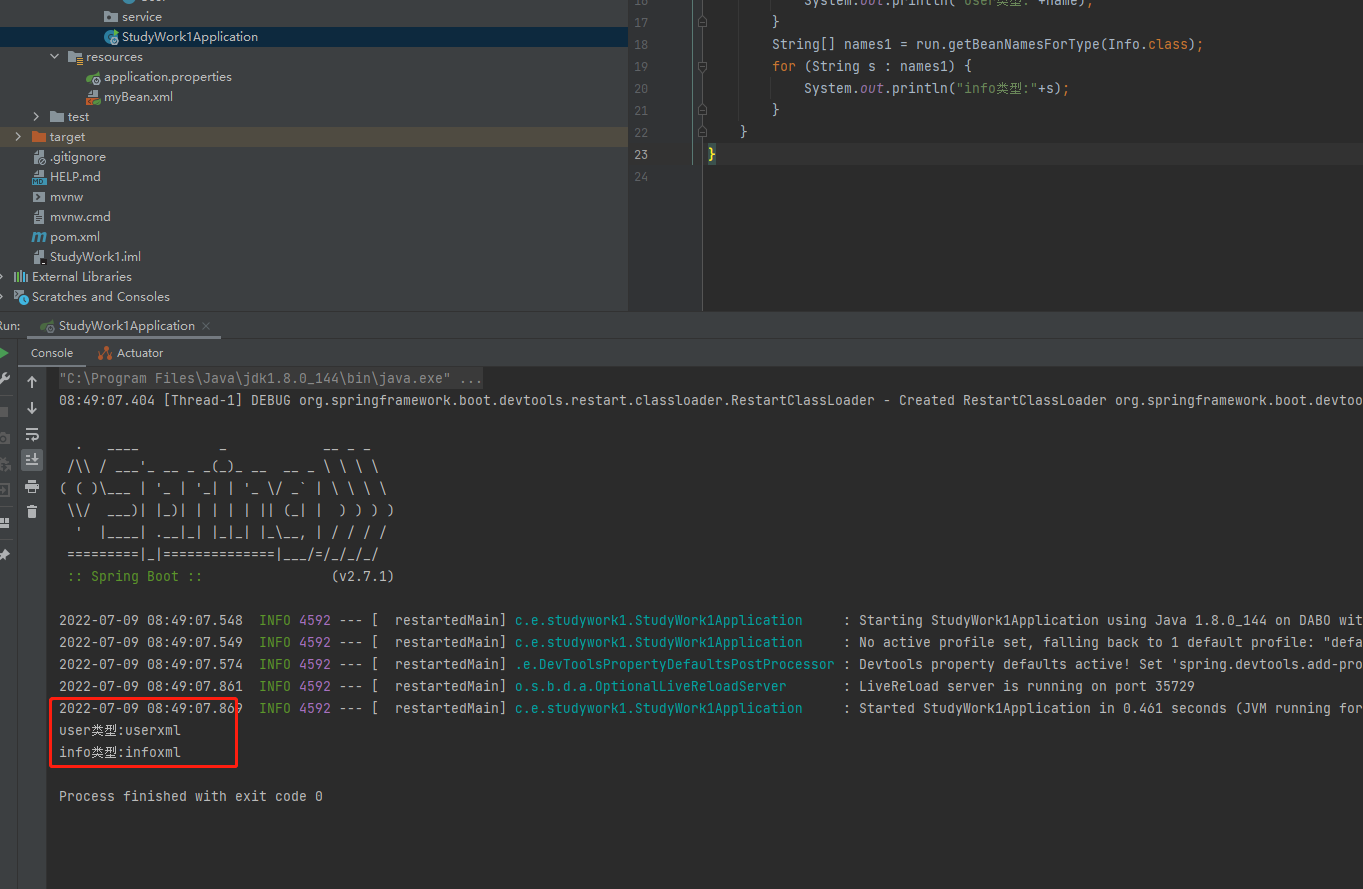@ImportResource原生配置文件引入
xml配置文件
<?xml version="1.0" encoding="UTF-8"?> <beans xmlns="http://www.springframework.org/schema/beans" xmlns:xsi="http://www.w3.org/2001/XMLSchema-instance" xsi:schemaLocation="http://www.springframework.org/schema/beans http://www.springframework.org/schema/beans/spring-beans.xsd"> <bean id="userxml" class="com.example.studywork1.pojo.User"> <constructor-arg index="0" value="张三"/> <constructor-arg index="1" value="18"/> <property name="name" value="张三"></property> <property name="age" value="18"></property> </bean> <bean id="infoxml" class="com.example.studywork1.pojo.Info"> <constructor-arg index="0" value="长春"/> <constructor-arg index="1" value="男"/> <property name="address" value="长春"></property> <property name="sex" value="男"></property> </bean> </beans>
配置类
@Component @ImportResource("classpath:myBean.xml") public class MyConfig1 { }
@Data public class Info { private String address; private String sex; public Info(String address, String sex) { this.address = address; this.sex = sex; } }
@Data public class User { private String name; private int age; public User(String name, int age) { this.name = name; this.age = age; } }
输出类
@SpringBootApplication public class StudyWork1Application { public static void main(String[] args) { ConfigurableApplicationContext run = SpringApplication.run(StudyWork1Application.class, args); String[] names = run.getBeanNamesForType(User.class); for (String name : names) { System.out.println("user类型:"+name); } String[] names1 = run.getBeanNamesForType(Info.class); for (String s : names1) { System.out.println("info类型:"+s); } } }
输出结果



 浙公网安备 33010602011771号
浙公网安备 33010602011771号